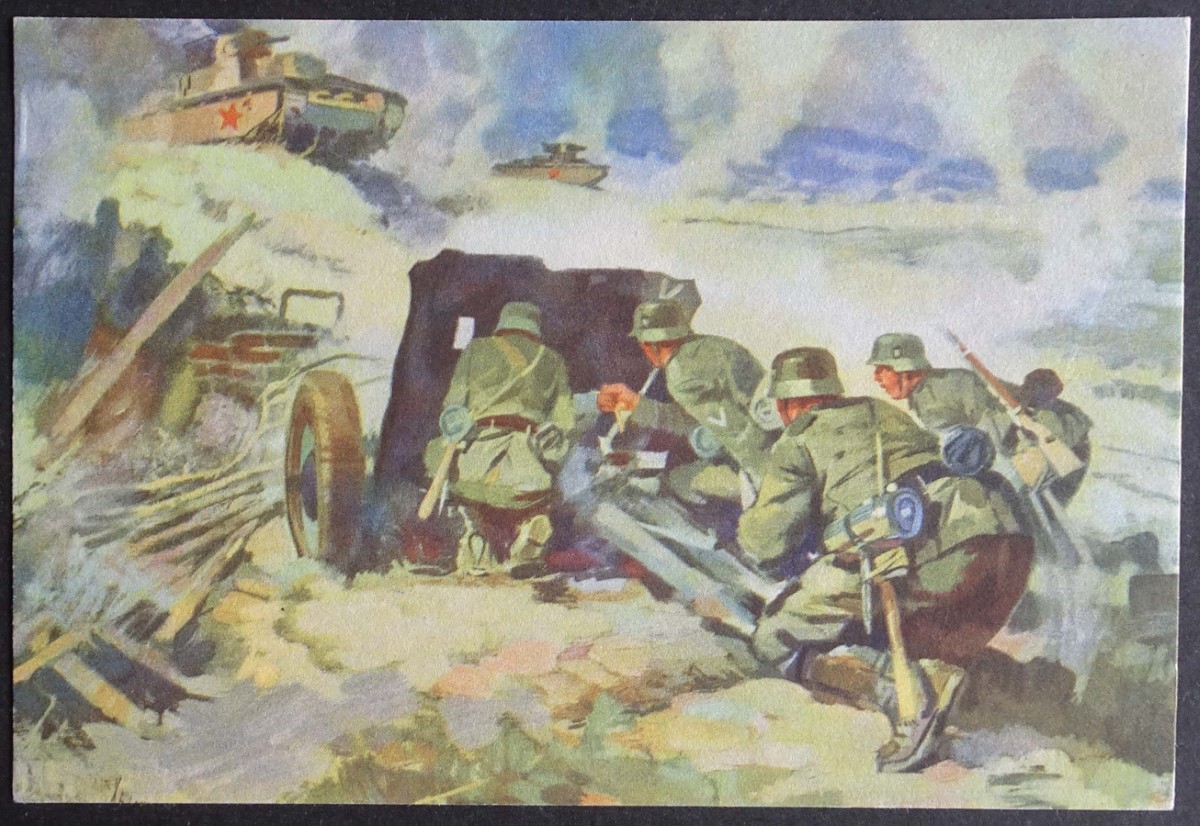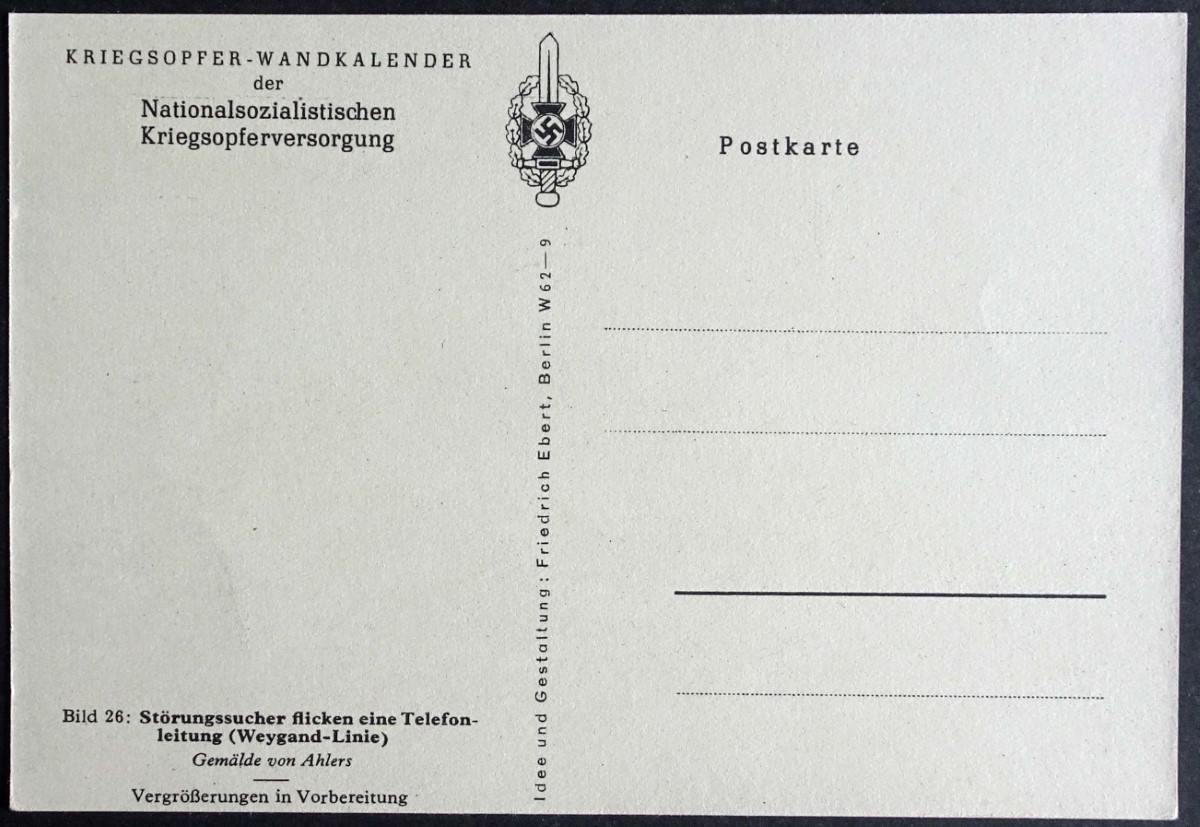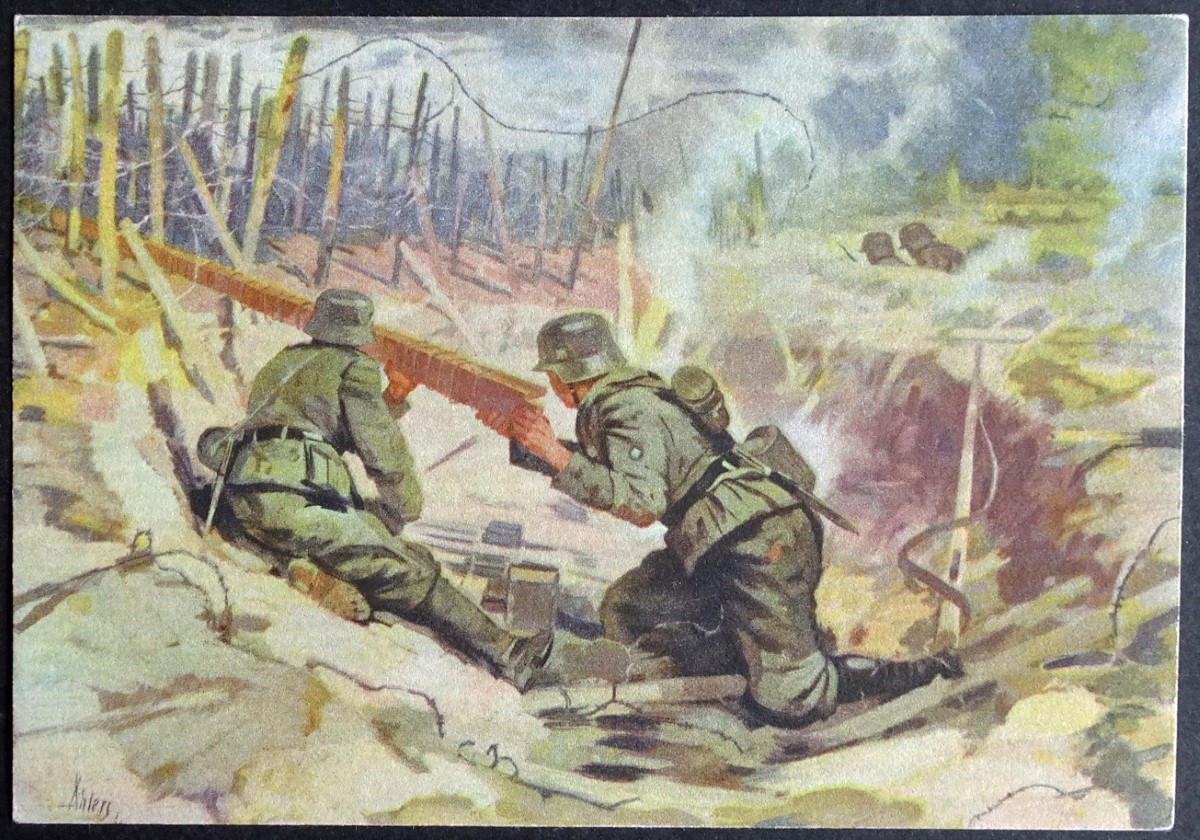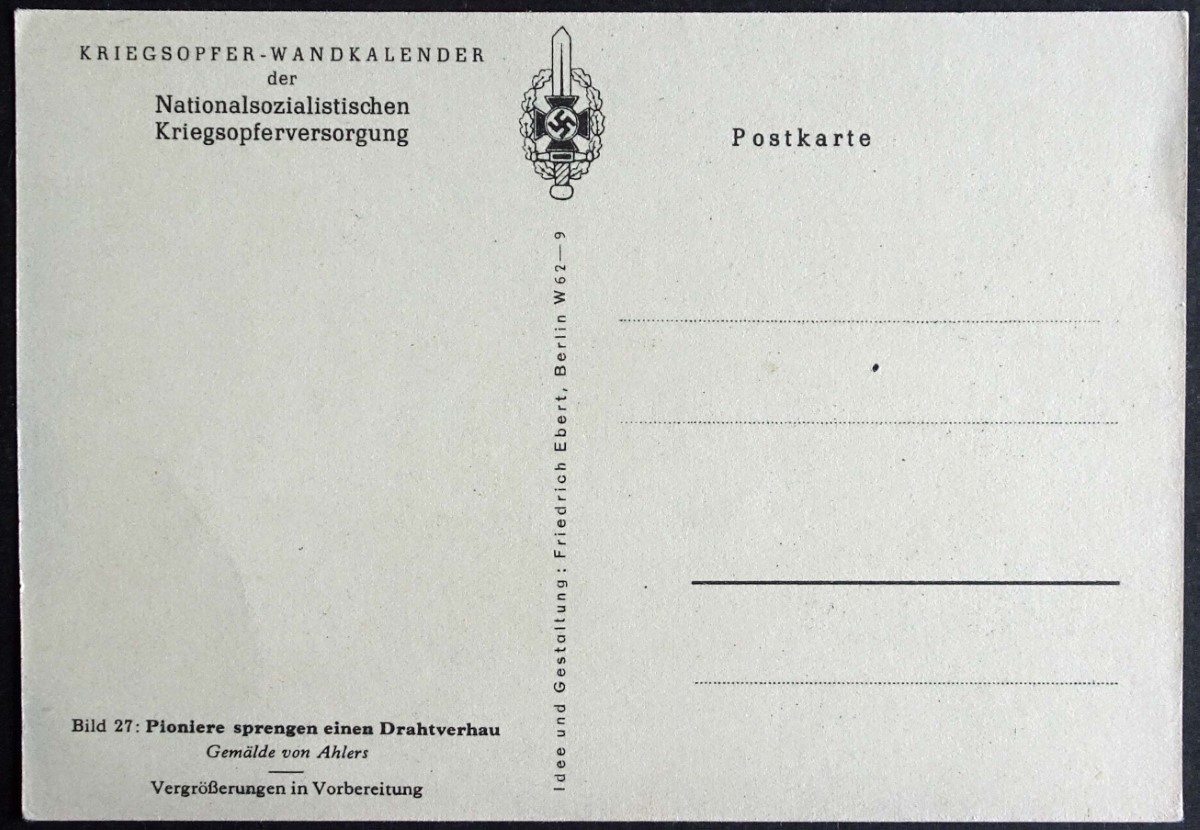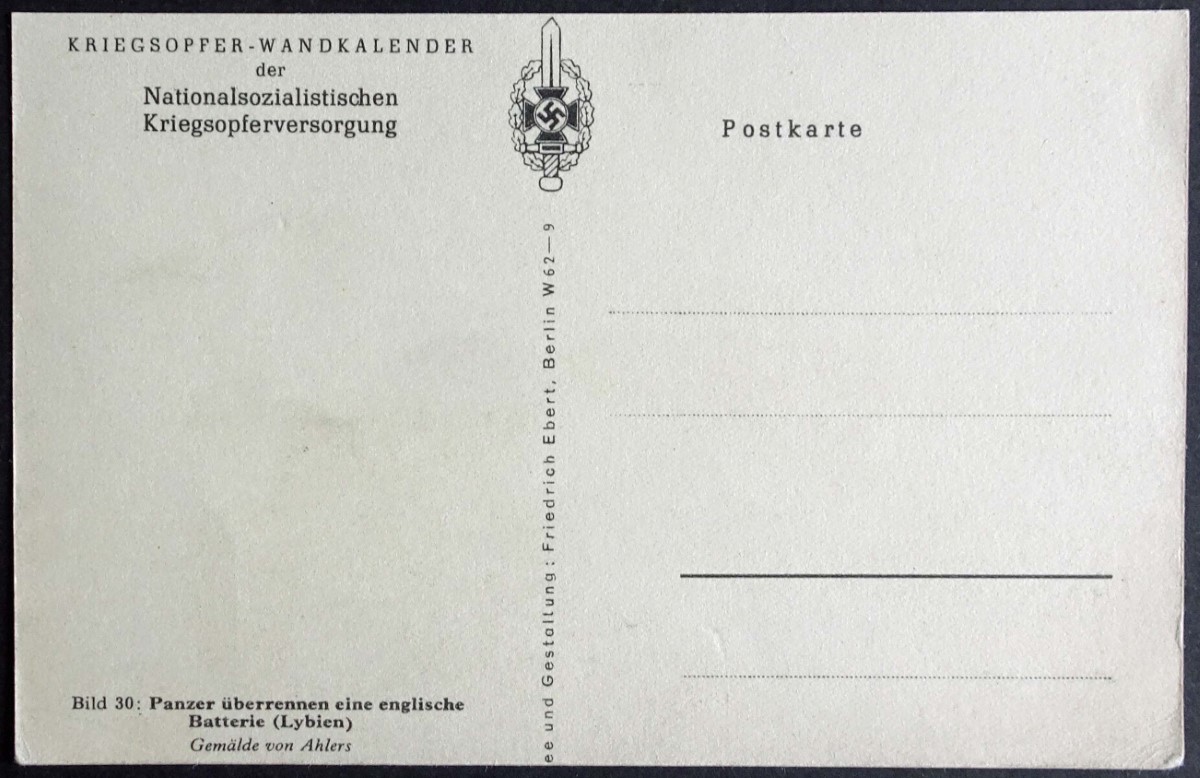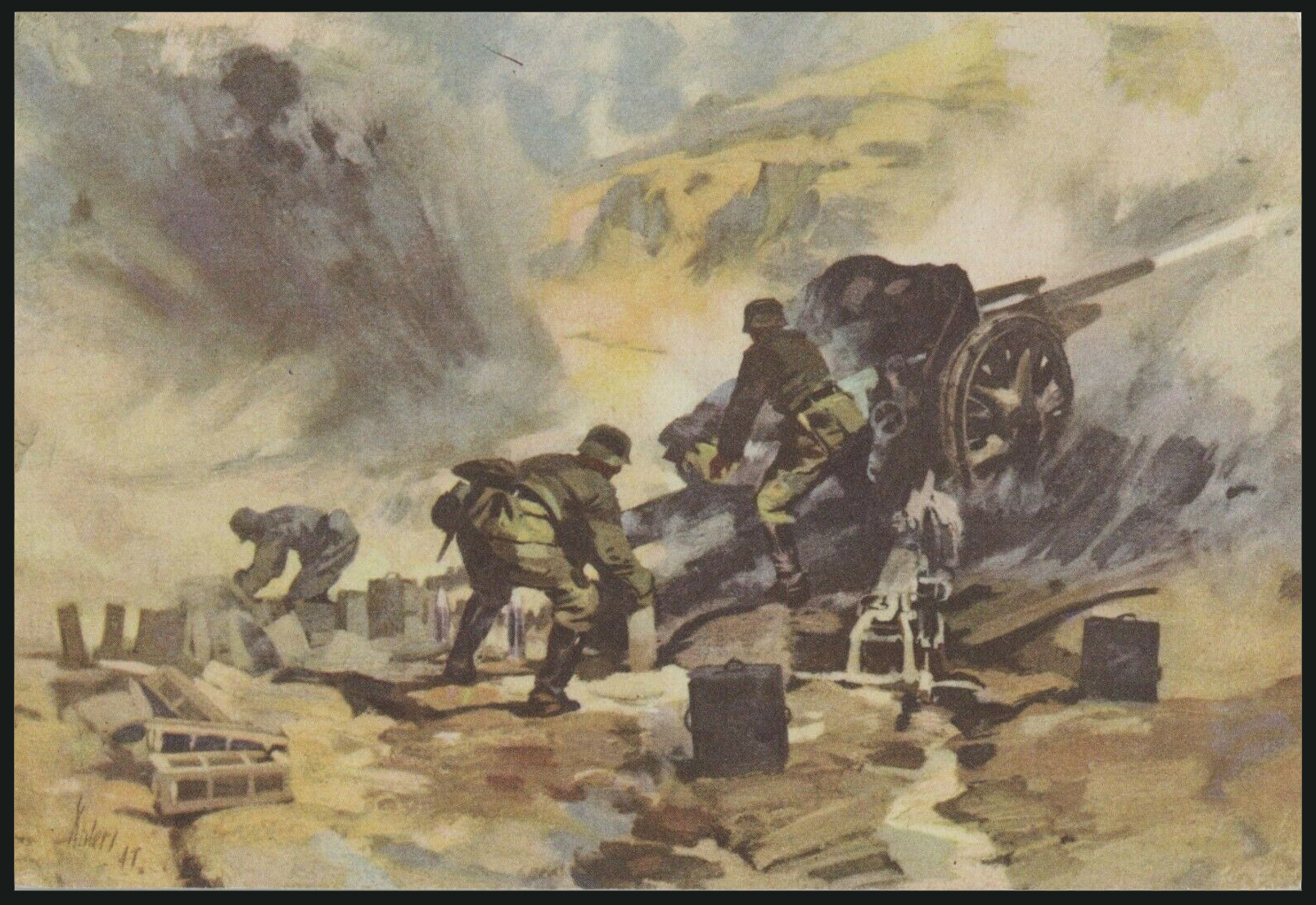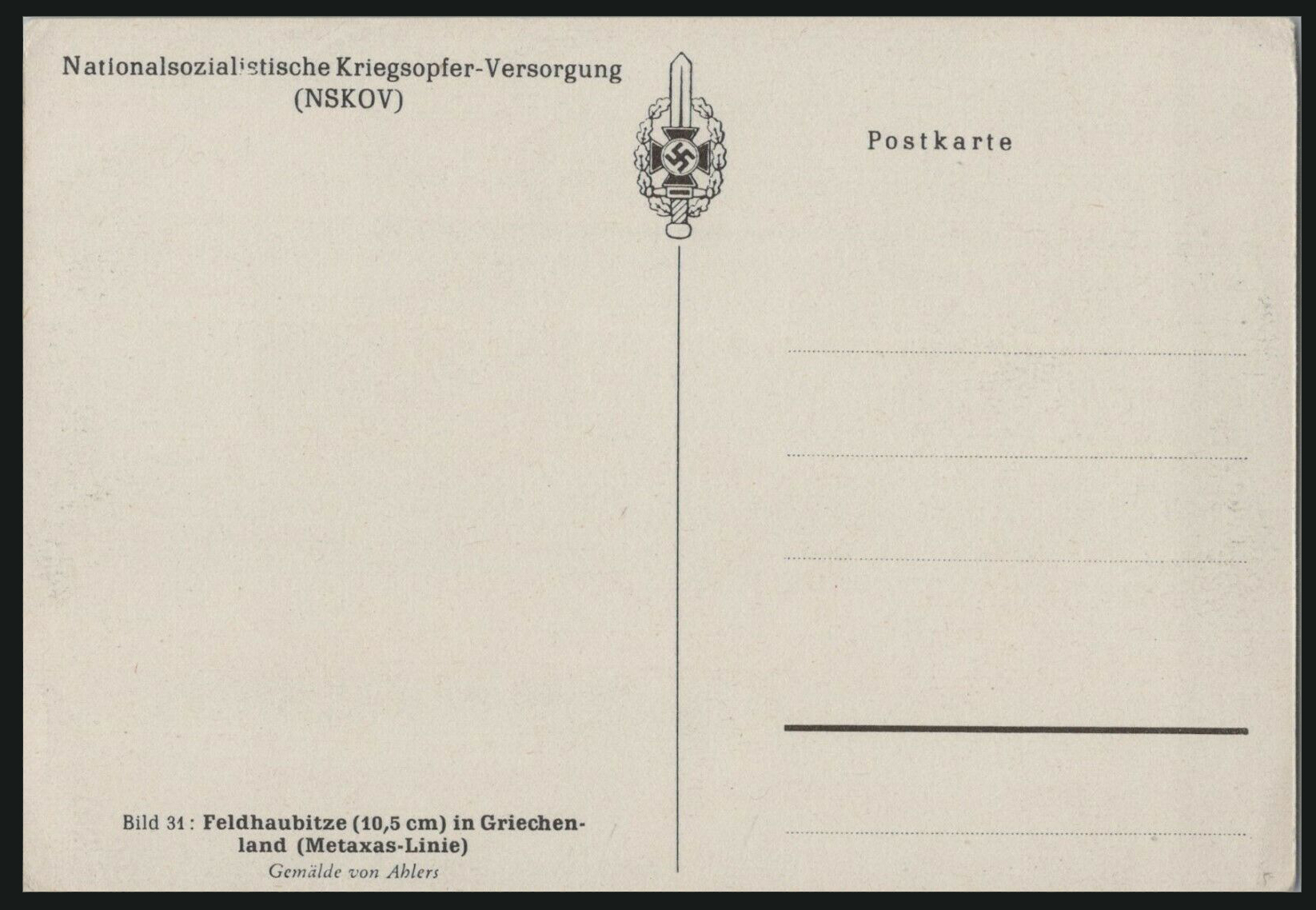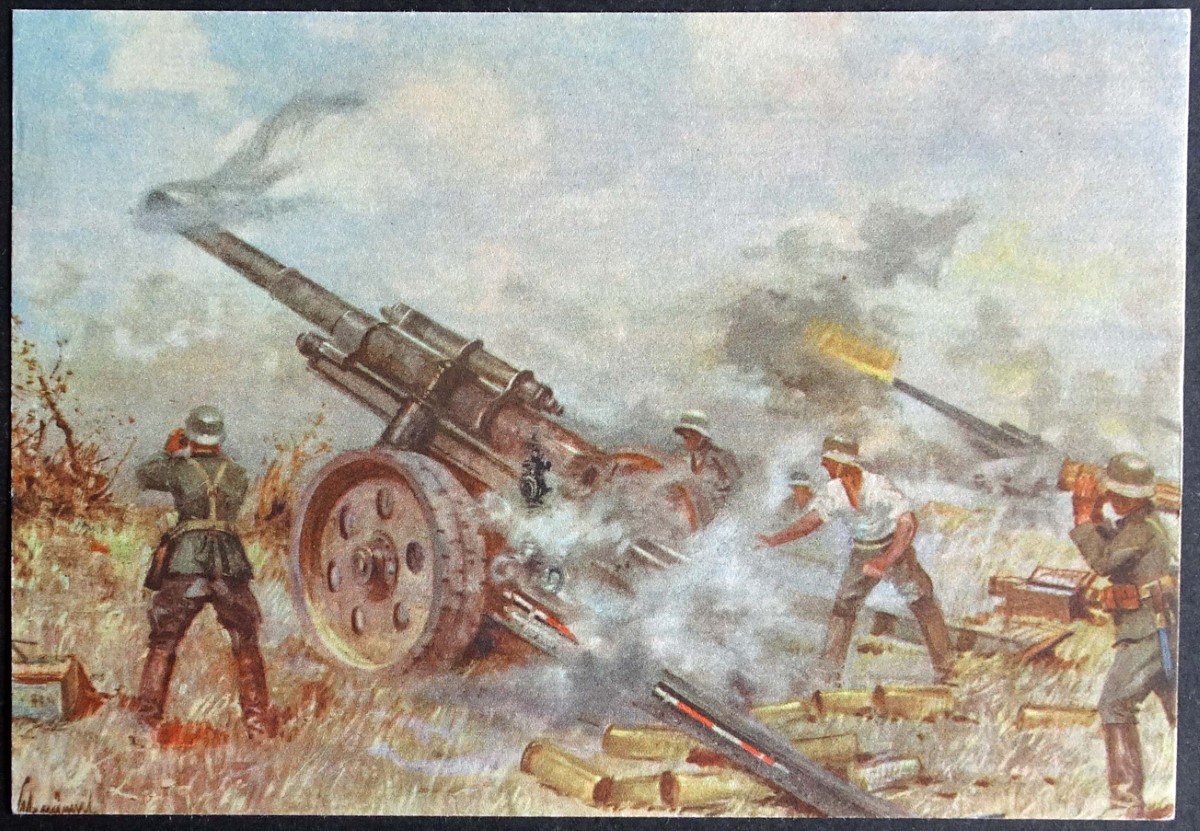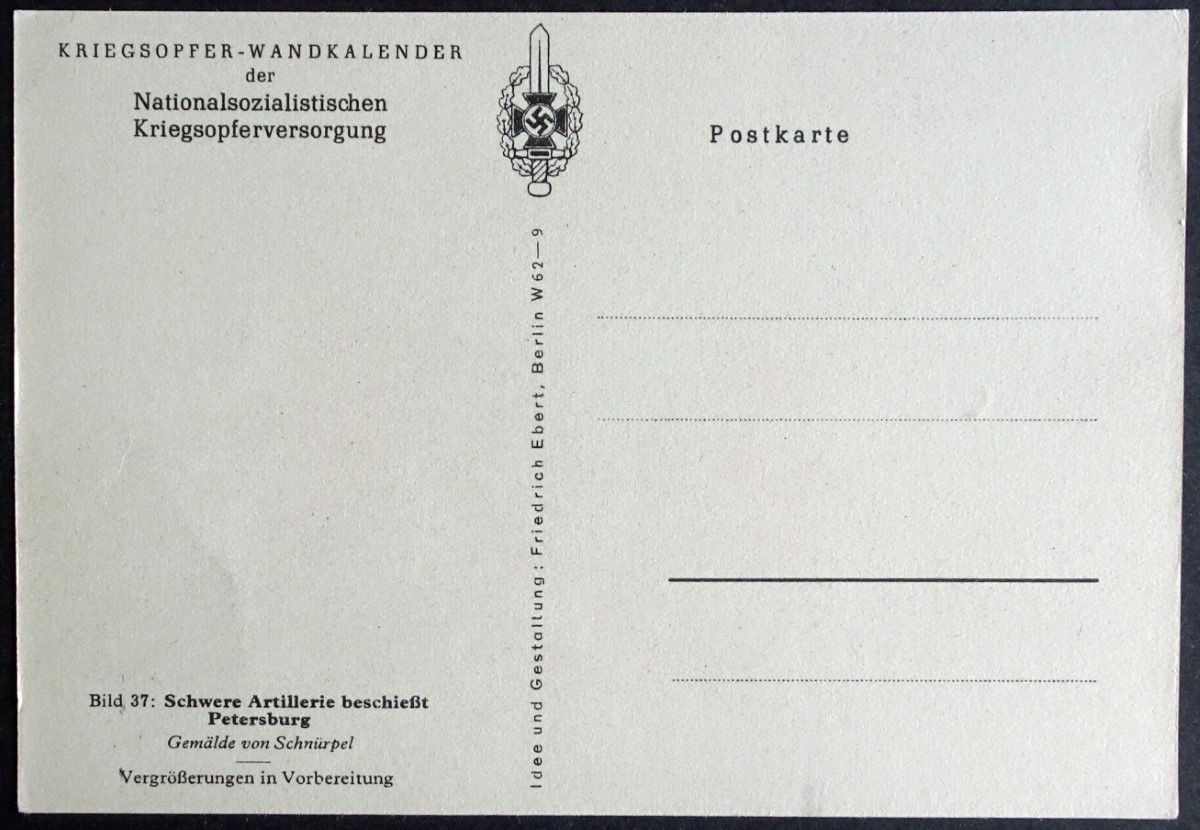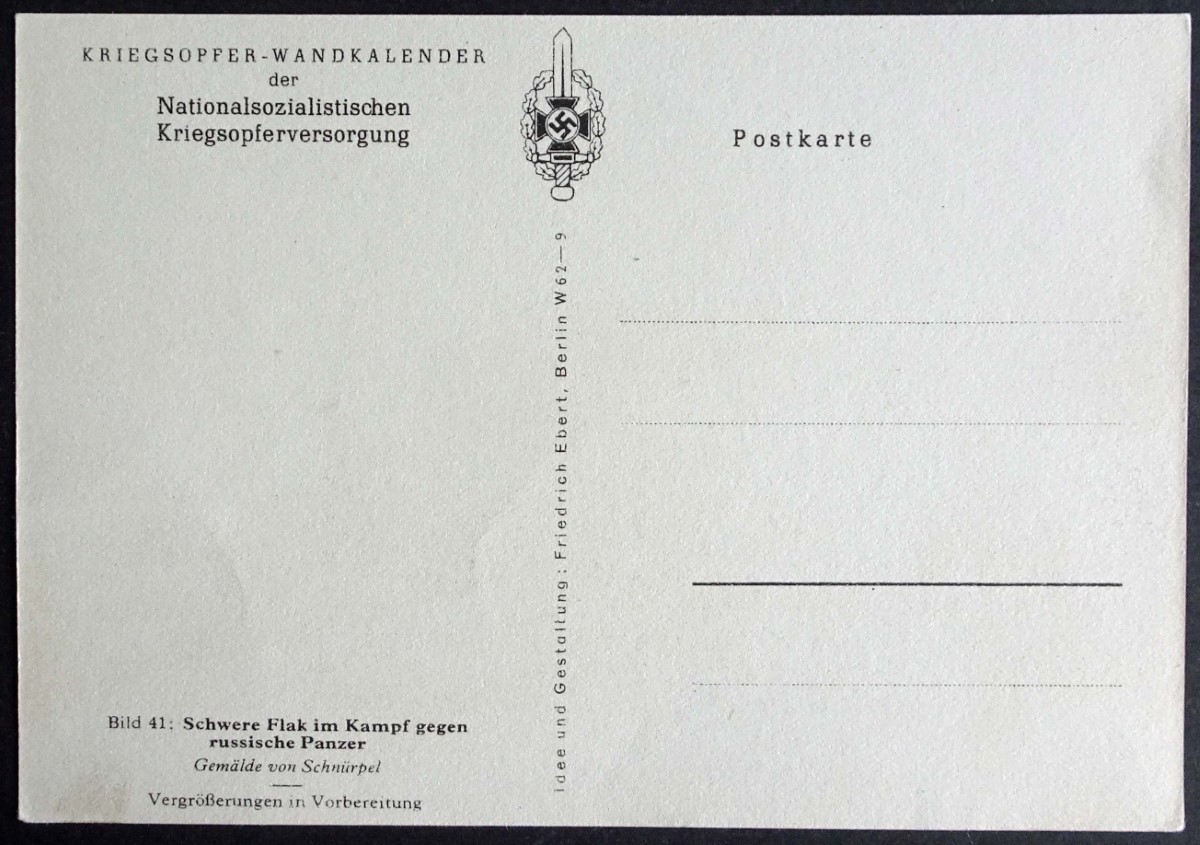NATIONALSOZIALISTISCHEN KRIEGSOPFERVERSORGUNG
NSKOV
POSTCARDS

KRIEGSOPFER WANDKALENDER
WAR VICTIMS WAR CALENDAR

No. 25
This postcard is titled 'Pak erledigt einen russischen Panzer (10t)' - 'Pak kills a Russian tank (10t)'. Painting by Ahlers. The tanks in question here are most likely Soviet KV-1's. These tanks were heavily armoured and were only vulnerable to German 88mm flak guns, the smaller PAK's being mostly ineffective. No. 25
From My Collection

No. 26
This postcard is titled 'Störungssucher flicken eine Telefonleitung (Weygand-Linie)' - 'Lineman mending a telephone line (Weygand line)'. Painting by Ahlers. Telephone lines were very important to the soldiers at the front. A forward observer was able to quickly relay troop movements back to artillery and have them adjust where their shells landed, without telephone lines this task was all but impossible. No. 26
From My Collection

No. 27
This postcard is titled 'Pioniere sprengen einen Drahtverhau' - 'Pioneers break wire entanglements'. Painting by Ahlers. Laying barbed wire was perhaps one of the most dangerous jobs a soldier could be asked to perform. It generally involved laying wire close to enemy lines where there was the constant risk of being discovered as the wire was placed. For the most part rubber mallets and sound reducing covers were used to keep any sounds to a minimum. No. 27
From My Collection

No. 28
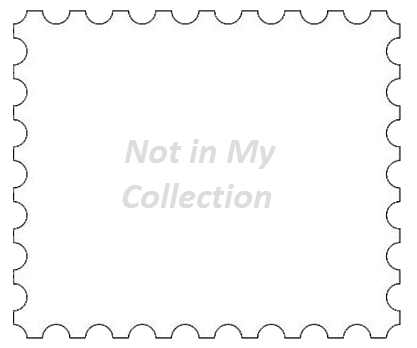


No. 29
This postcard is titled 'Fallschirmjäger landen auf kreta' - 'Paratroopers land on Crete'. Painting by Ahlers. The invasion of Crete was the last time that German paratroopers took part in an aerial assault. For the rest of the war the paratroops only operated as ground troops. No. 29
From My Collection

No. 30
This postcard is titled 'Panzer überrennen eine englische Batterie (Lybien)' - 'Tanks overrun an English battery (Libya)'. Painting by Ahlers. No. 30
From My Collection

No.31
This painting is titled 'Feldhaubitze (10.5 cm) in Griechenland (Metaxas-Linie)' - 'Field howitzer (10.5 cm) in Greece (Metaxas line)'. No. 31
From My Collection

No. 32



No. 33



No. 34



No. 35



No. 36
This postcard is titled 'Artillerie nach vorn (Belgien)' - 'Artillery forward (Belgium)'. Painting by Schnürpel. This painting shows the important role played by horses in the Second World War. Most people are familiar with Blitzkrieg attacks featuring fast moving columns of armour, but horses played a vital part in moving supplies and artillery pieces throughout the war. An additional bonus was you could always eat the horse if you were hungry, you couldn't do that with a tank.
No. 37
This postcard is titled 'Schwere Artillerie beschieβt Petersburg' - 'Heavy artillery bombarded Petersburg'. Painting by Schnürpel. No. 37
From My Collection

No. 38
This card is titled 'Sturmgeschütze im Angriff in Ruβland' - 'Assault guns on the attack in Russia'. Painting by Schnürpel.
No. 39



No. 40



No. 41
This postcard is titled 'Schwere Flak im Kampf gegen russische Panzer' - 'Heavy anti-aircraft guns fighting Russian tanks'. Painting by Schnürpel. The image features an 88mm anti-aircraft gun being used in it's secondary role as a tank destroyer. The 88mm was an extremely effective weapon in both roles. No. 41
From My Collection


